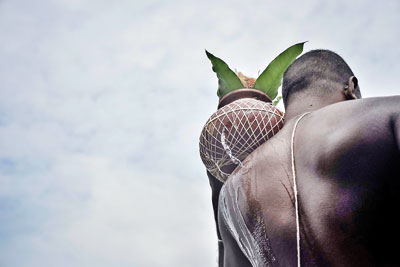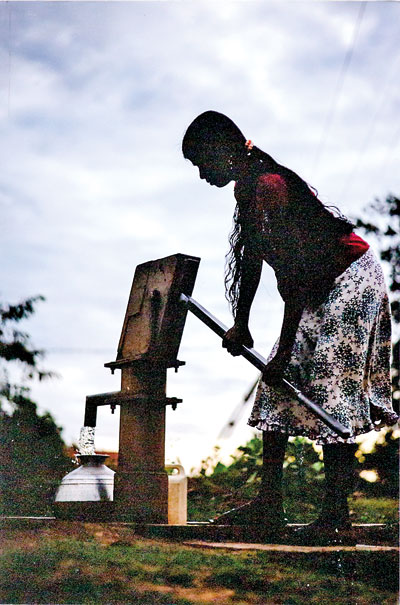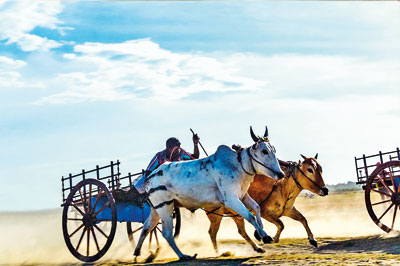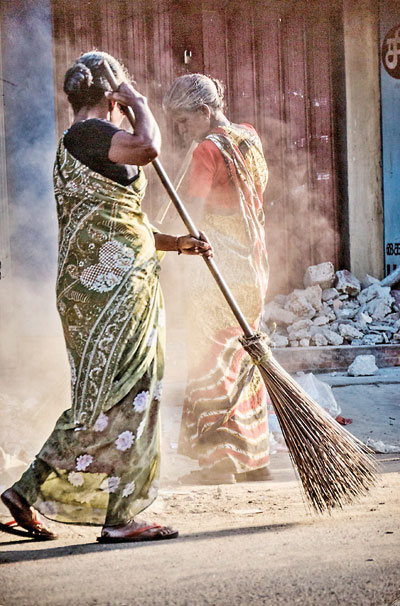Arts
Telling their diverse stories with a click
The funeral rites performed by Hindus at the cemetery, the smiling faces of children dancing around their teacher, the hard work of a labourer. These were some of the images captured by young photographers and exhibited at the Lionel Wendt Art Centre in Colombo recently. The exhibition, “Our country – our people”, organised by the Centre for Peace Building and Reconciliation as part of its “Voice of Image” photography programme looked to highlight the lifestyles of people from all over Sri Lanka.
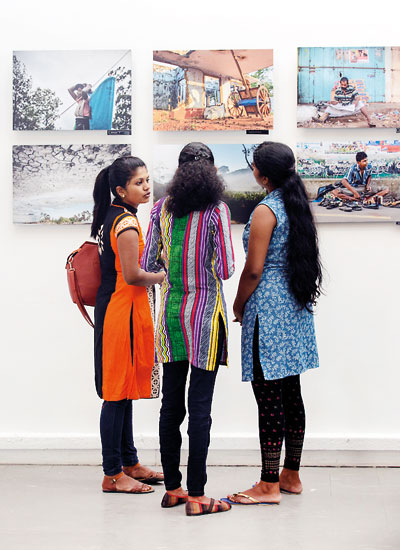
Young enthusiasts at the exhibition at the Lionel Wendt. Pix by Sameera Weeraratne
Director of programmes at the Centre for Peace Building and Reconciliation Dishani Jayaweera says she started this project to see if photography could be used to convey the stories of people across Sri Lanka. Having worked in the field of reconciliation from 1997, Dishani says she realised that when she tried to convey people’s stories, it didn’t have the same effect. She found photographer Jayanth Dharmawardena, who designed the project for the centre.
The project started with 40 students from Tirukovil, Kattankudy, Anuradhapura and Hatton in 2012, and a new intake was taken in 2015 from areas such as Jaffna and Polonnaruwa. Each group has 8-15 students who shared one or two cameras among them, using the camera to a schedule. Each group had 3-4 photography workshops lasting three days each through which they learnt how to take pictures, how others viewed their photography and the different techniques – it is the ideal way to learn about unity and diversity, she feels. “We all have one camera and we can all see this stone, but ten of us have taken it in ten ways, and 15 people have said 15 things about that and no one is saying what I thought. Through that you’re learning that people will interpret things in different ways, and that’s diversity. Before you see differences within other communities, they learn that this is happening within your own community,” she explains.
Krishan Sanira, 28, who works as a wall artist in Polonnaruwa hadn’t touched a camera before the programme. “Jayanth sir apita hama welema kiwwe pinthure athulatawela frame eka athulatawela jiwath wenna kiayala (Jayanth sir always told us to go inside the picture and live inside the frame),” he says. His favourite picture is one of a young priest holding a toy car and pushing it up and down a blank wall, because it shows the rules which these young monks have to deal with. “Apita e minissunge jiwitha walata ebila balanna puluwan (we can peek at their lives),” he says.
For 19-year-old Dilka Shehani, also from Polonnaruwa and has just finished her A’ Levels, the camera helps her convey a message. Dilka says that during her free time, she likes to be alone with her camera. “Then I can see things which no one sees and no one looks for and can take many pictures which will help society. It’s a great opportunity for me to show people what I have seen,” she says, adding that she hopes to improve and become an even better photographer.

Some of the exhibits on display
“I learnt about humanity – happiness, sadness, lifestyle and the environment people live in,” says Agalya Selvaraj, a 22-year-old from Hatton adding that she hopes to reveal the untold stories of people to the country. “Many people don’t know how others live. I want to show people how they live, their culture, the gods they worship etc.,” she says.
George Justin, 37, from Jaffna worked as a coordinator for the project for the Jaffna region and says he was able to get a lot out of the programme because he was able to borrow the camera when other students weren’t using it and he attended the programmes conducted by Jayanth in Jaffna, thus learning a lot from him. He hopes to become a famous photographer one day. “Then I can take pictures from all over the world and show our people what the world looks like and also show the world what Sri Lanka looks like. When others ask about my photos and become curious about them, it makes me happy,” he says.
Jayanth Dharmawardena says he wanted to give the students a training which would help them take artistic photographs, but also teach them to have a conscience. “If they follow people from the time they brush their teeth in the morning till night taking pictures, then they will become a nuisance. I wanted them to cultivate a relationship with the people so that they would think for themselves if their photographs will help or harm them and avoid taking a good picture in some instances if it would harm them,” he explains. He believes he has seen a great transformation and hopes they will continue learning now that their interest in photography has been kindled.
